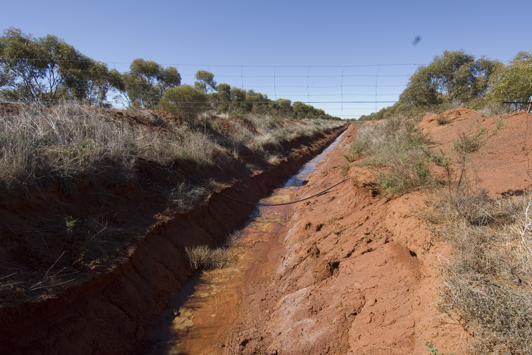Understanding leveed groundwater drains
Leveed groundwater drains are excavated channels with sloping floors and sides that intercept and drain groundwater, with levees on both sides that exclude surface water. To be effective, the channel should be dug below a water table in soils that allow good lateral drainage.
Groundwater drains must have a well-designed and safe discharge site.
In most cases, surface water should be excluded from the drain as its depth and shape make it prone to batter erosion (as surface water enters the drain), scouring and sedimentation. Surface water can be drained from outside the spoil bank by piped inlets that extend through the bank at ground level and discharge into the drain channel.
An open deep drain is only recommended where surface water cannot be excluded due to the placement or layout of the drain or where the drain is designed to cope with the inflow of surface water.
On the right site, leveed drains can help reduce salinisation and waterlogging. The department recommends that these drains are part of an integrated catchment and farm water management program.
Notify your intent before draining or pumping water
An owner or occupier of land must give at least 90 days’ notice to the Commissioner of Soil and Land Conservation of an intent to drain subsurface water to control salinity and discharge that water onto other land, into other water or into a watercourse, even if on the same property.
The notice must be in writing using the notice of intent to drain or pump (NOID) form.
Notice of Intent to DrainView the bulletin on Deep Drains
See the essential design and planning considerations for constructing leveed groundwater drains.
Visit digital library
